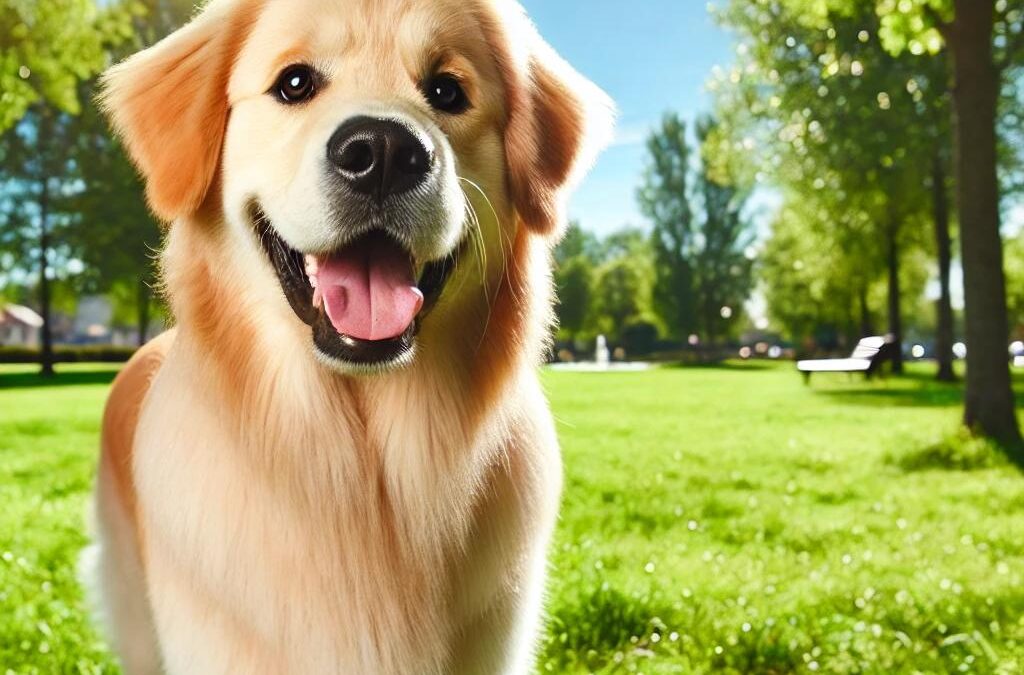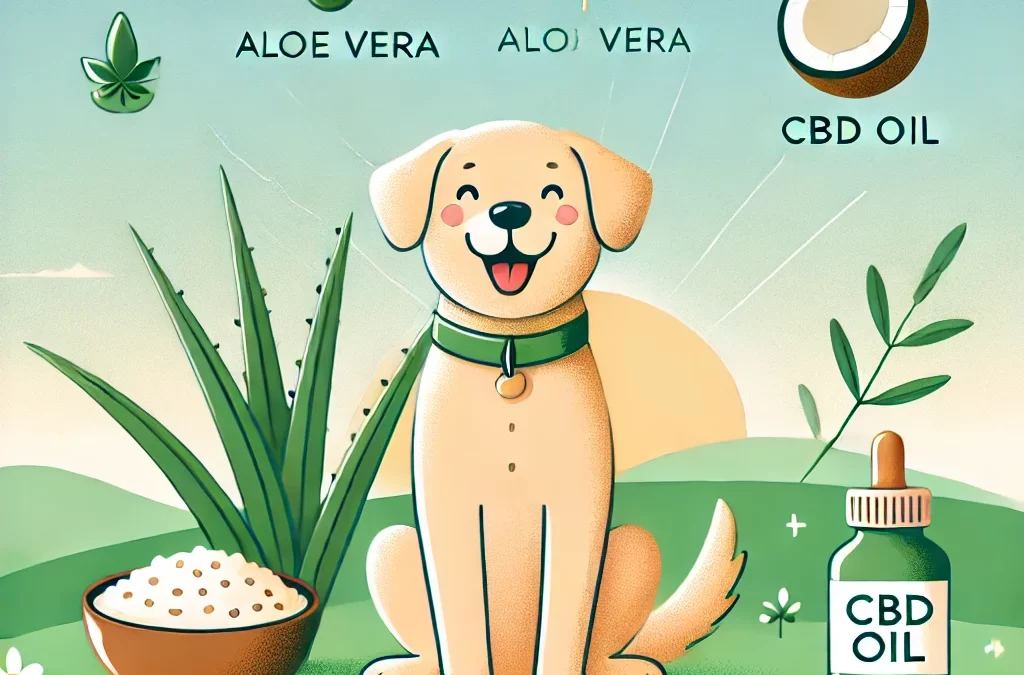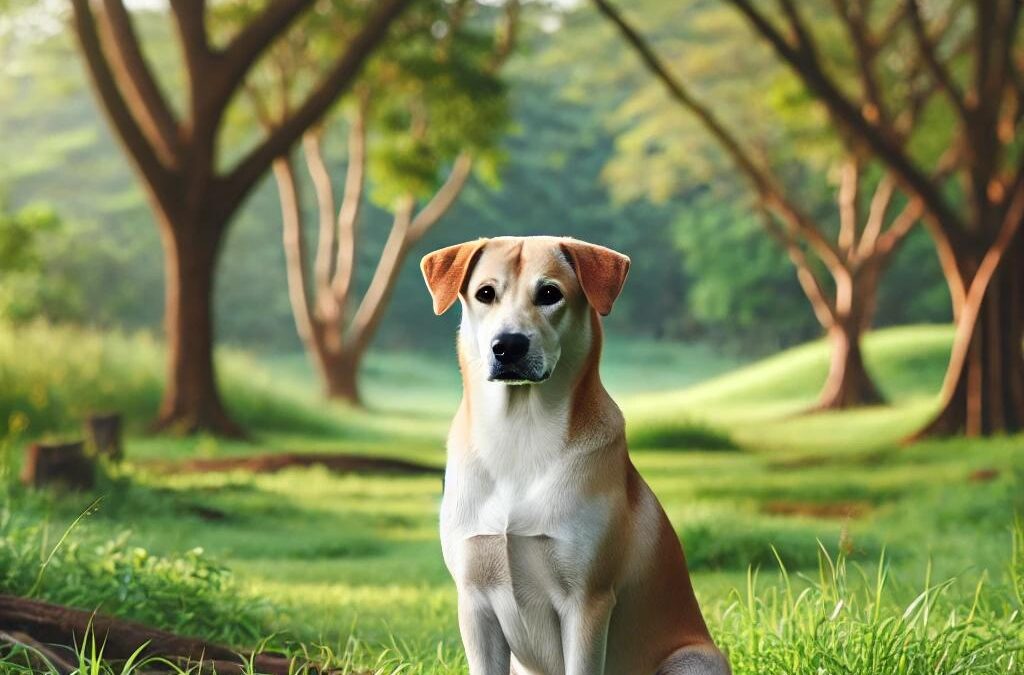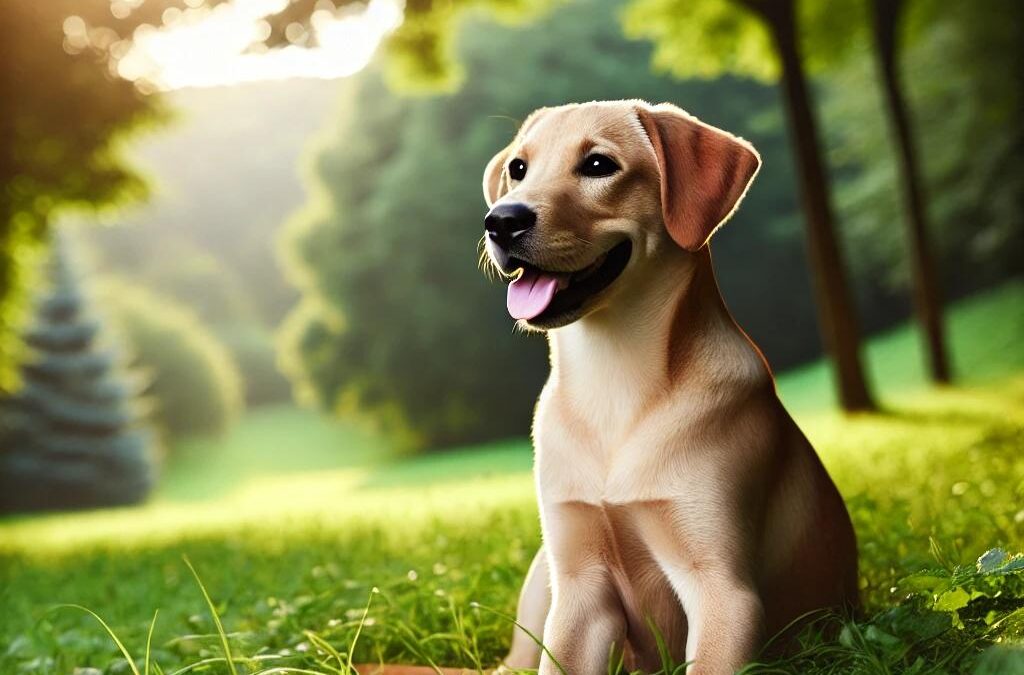
da TCMVET | 25 ottobre 2024 | fitoterapia cinese per animali da compagnia
Chuanxiong, noto anche come Szechuan Lovage, è un'erba preziosa nella medicina tradizionale cinese nota per la sua capacità di rinvigorire la circolazione sanguigna e risolvere la stasi del sangue. Negli ultimi anni, ha attirato l'attenzione per i suoi potenziali benefici nell'aiutare i cani con sintomi di stasi del sangue causati da tumori.
Come il Chuanxiong aiuta i cani con tumori
- Migliora la circolazione sanguigna
Chuanxiong è altamente efficace nel promuovere il flusso sanguigno. Per i cani che soffrono di tumori, questo può aiutare a migliorare la circolazione, assicurando che l'ossigeno e i nutrienti raggiungano le aree del corpo in cui la circolazione potrebbe essere compromessa.
- Risolve la stasi del sangue
I tumori possono spesso portare a stasi del sangue, una condizione in cui il flusso sanguigno è lento o bloccato. Chuanxiong aiuta a rompere questi blocchi, promuovendo un movimento del sangue più fluido e aiutando il corpo a rimuovere le tossine in modo più efficiente.
- Allevia la pressione del tumore
Man mano che i tumori crescono, possono causare una sensazione di pressione o fastidio nelle aree interessate. Chuanxiong lavora per alleviare questi sintomi migliorando la circolazione sanguigna e riducendo le dimensioni di qualsiasi accumulo di sangue stagnante attorno al tumore, alleviando così il fastidio.
- Allevia il dolore
Chuanxiong è noto per avere proprietà antidolorifiche. Per i cani con tumori, il dolore può essere un problema significativo. Questa erba può aiutare a ridurre il dolore affrontando la causa principale, come cattiva circolazione o infiammazione, fornendo un sollievo naturale.
- Supporta la guarigione naturale
Migliorando il flusso sanguigno e riducendo la stasi, Chuanxiong aiuta i meccanismi di guarigione naturali dell'organismo a funzionare in modo più efficace, il che lo rende un integratore eccellente da includere nel piano olistico di cura del cancro di un cane.
Come integrare Chuanxiong nella cura del tuo cane
Chuanxiong può essere somministrato tramite integratori specificamente progettati per i cani. È importante consultare un veterinario, preferibilmente uno esperto in medicina tradizionale cinese, prima di introdurre una nuova erba nella dieta del tuo cane. Può guidarti sul dosaggio corretto e garantire che Chuanxiong sia adatto alle condizioni specifiche del tuo cane.
Chuanxiong (Szechuan Lovage) è un ottimo rimedio naturale per i cani che soffrono degli effetti dei tumori. Migliorando la circolazione sanguigna, alleviando la pressione e alleviando il dolore, fornisce un approccio olistico per supportare il loro benessere. Integrare questa erba nella routine di salute del tuo cane, insieme alle cure veterinarie, può offrire una vita più confortevole ed equilibrata per il tuo animale domestico.

da TCMVET | 23 ottobre 2024 | Cancro e tumori del cane
L'emangiopericitoma è un tumore maligno che si sviluppa dalle cellule pericitiche, che si trovano attorno ai piccoli vasi sanguigni (capillari) nei cani. Sebbene questo tipo di tumore possa verificarsi in qualsiasi razza di cane, è più comunemente riscontrato nelle razze di grandi dimensioni. La diagnosi precoce e il trattamento sono fondamentali per prevenire ulteriori complicazioni di salute. Questo articolo sottolinea l'importanza di riconoscere i primi segni ed esplora le varie opzioni di trattamento disponibili per l'emangiopericitoma nei cani.
Quali sono le cause dell'emangiopericitoma nei cani?
I periciti sono cellule del tessuto connettivo che circondano i vasi sanguigni, svolgendo un ruolo chiave nel supportare il sistema vascolare. In circostanze normali, queste cellule possono differenziarsi in altri tipi di cellule tissutali, aiutando nella rigenerazione e nella riparazione. Tuttavia, quando si verifica una divisione cellulare anomala, può svilupparsi un tumore come l'emangiopericitoma. La causa esatta rimane sconosciuta, ma fattori come la genetica, l'esposizione ambientale o un trauma possono contribuire alla formazione del tumore.
Sintomi e segnali di avvertimento
Gli emangiopericitomi sono tumori a crescita lenta che solitamente si sviluppano nel tessuto sottocutaneo. Sebbene il tumore possa non essere evidente all'inizio, man mano che cresce, può causare disagio fisico o cambiamenti visibili. I sintomi comuni includono:
- Un nodulo o una massa solida sotto la pelle
- Gonfiore o dolore localizzato attorno al tumore
- Letargia o ridotta attività fisica, soprattutto se il tumore colpisce il movimento
- Segni di disagio se il tumore preme su organi vitali o articolazioni
- Difficoltà respiratorie se il tumore si sviluppa nella zona del torace
Sebbene il tumore sia nella maggior parte dei casi localizzato, in rari casi può metastatizzare in altre parti del corpo, in particolare nei polmoni o nel fegato.
Diagnosi dell'emangiopericitoma
Se il tuo cane sviluppa un nodulo o mostra sintomi che potrebbero indicare un tumore, è essenziale una visita dal veterinario. Un esame fisico completo, seguito da una biopsia della massa, è in genere il primo passo per diagnosticare l'emangiopericitoma. Tecniche di imaging avanzate come scansioni TC o risonanze magnetiche possono anche essere utilizzate per valutare le dimensioni e la posizione del tumore, nonché per verificare possibili metastasi.
Opzioni di trattamento per l'emangiopericitoma
Il trattamento principale per l'emangiopericitoma è la rimozione chirurgica del tumore. Poiché questi tumori possono essere profondamente incorporati nel tessuto, l'intervento chirurgico potrebbe dover essere esteso per garantire la rimozione completa e ridurre il rischio di recidiva. Nei casi in cui il tumore non può essere completamente asportato o se si trova in un'area sensibile come il torace, può essere impiegata la radioterapia per ridurre il tumore prima dell'intervento chirurgico.
La chemioterapia è un'altra opzione, soprattutto se il tumore si è diffuso ad altri organi. Sebbene non sempre necessaria, può essere utile nei casi avanzati per aiutare a controllare la malattia. Le cure post-operatorie sono cruciali, con appuntamenti di follow-up regolari per monitorare eventuali segni di recidiva.
Prognosi e prevenzione
La prognosi per i cani a cui è stato diagnosticato un emangiopericitoma dipende in larga misura dalla diagnosi precoce e dalla rimozione riuscita del tumore. Nella maggior parte dei casi, l'esito è favorevole se il tumore viene individuato prima che diventi troppo grande o metastatizzi. I proprietari di animali domestici dovrebbero essere proattivi nel controllare regolarmente eventuali noduli o anomalie sulla pelle del loro cane, soprattutto se possiedono un cane di grossa taglia.
Sebbene sia impossibile prevenire l'emangiopericitoma, mantenere uno stile di vita sano per il tuo cane, con una dieta equilibrata, esercizio fisico regolare e controlli veterinari di routine, può aiutare a migliorare il suo benessere generale e la sua resilienza ai problemi di salute.
L'emangiopericitoma è una condizione grave ma curabile nei cani, in particolare nei cani di grossa taglia. Comprendere i primi sintomi ed esplorare tutte le opzioni di trattamento disponibili può fare una differenza significativa nella gestione della malattia. Se noti noduli insoliti o cambiamenti nel comportamento del tuo cane, rivolgiti subito a un veterinario per garantire il miglior risultato possibile.

da TCMVET | 16 ottobre 2024 | Alimentazione e salute
Le eruzioni cutanee nei cani sono più comuni di quanto si possa pensare e possono variare da lievi irritazioni a gravi condizioni cutanee. Ma cosa succede se i trattamenti tradizionali non funzionano o se si cercano opzioni più naturali? Ecco una nuova versione del trattamento delle eruzioni cutanee nei cani che unisce strategie di cura innovative a metodi collaudati per aiutare il tuo cane a riprendersi più velocemente e più comodamente.
1. Comprendere la causa principale
Prima di iniziare il trattamento, è fondamentale identificare la causa sottostante dell'eruzione cutanea del tuo cane. Le eruzioni cutanee possono essere scatenate da diversi fattori:
- Allergie: Allergeni ambientali (polline, polvere), cibo o punture di pulci.
- Infezioni: Le infezioni batteriche, fungine o parassitarie possono irritare la pelle.
- Malattie autoimmuni: Sono rari ma possono causare problemi cutanei persistenti.
Individuando la causa, sarai meglio equipaggiato per trattare efficacemente l'eruzione cutanea. Consultare il veterinario è essenziale per ottenere una diagnosi chiara, ma ci sono modi innovativi per gestire i sintomi a casa.
2. Aloe Vera: il lenitivo naturale per la pelle
L'aloe vera è nota per le sue proprietà rinfrescanti e antinfiammatorie, che la rendono un rimedio eccellente per le eruzioni cutanee nei cani. Usa gel di aloe vera puro (senza additivi) e applicalo delicatamente sulla zona interessata. Può ridurre prurito, rossore e irritazione, offrendo sollievo immediato al tuo animale domestico.
3. Bagni di farina d'avena: un rimedio collaudato con un tocco di novità
I bagni di farina d'avena sono spesso consigliati per i cani con problemi alla pelle, ma puoi migliorare questa semplice soluzione aggiungendo tè verde all'acqua del bagno. Il tè verde contiene antiossidanti naturali che possono calmare la pelle infiammata e rafforzare il sistema immunitario. Combina farina d'avena finemente macinata con tè verde preparato per un bagno che lenisce le irritazioni e favorisce la guarigione della pelle.
4. Olio di cocco: oltre l'idratazione
L'olio di cocco è un altro rimedio versatile per le eruzioni cutanee nei cani. Sebbene le sue proprietà idratanti siano ampiamente note, ha anche effetti antibatterici e antimicotici. Applicare olio di cocco sull'eruzione cutanea può aiutare a prevenire l'infezione mantenendo la pelle idratata. Per una spinta in più, mescola qualche goccia di olio essenziale di lavanda, che può aiutare a ridurre il prurito e lenire ulteriormente la pelle infiammata.
5. Olio di CBD: una meraviglia moderna
L'olio di CBD ha guadagnato popolarità per le sue proprietà antinfiammatorie e calmanti. L'applicazione topica di olio di CBD sulle eruzioni cutanee del cane può aiutare a ridurre il disagio e il prurito. Interagisce con il sistema endocannabinoide del cane, che è coinvolto nel mantenimento della salute della pelle. L'olio di CBD può essere un'alternativa ai farmaci convenzionali che a volte causano effetti collaterali.
6. Modifiche dietetiche: trattamento delle eruzioni cutanee dall'interno verso l'esterno
A volte, condizioni della pelle come le eruzioni cutanee sono un sintomo di sensibilità alimentare. Prendi in considerazione il passaggio a un dieta ipoallergenica o incorporando integratori ricchi di omega-3 come olio di pesce nei pasti del tuo cane. Gli Omega-3 aiutano a ridurre l'infiammazione e a promuovere la salute della pelle e del pelo, agendo dall'interno per alleviare le eruzioni cutanee.
7. Probiotici per la salute della pelle
Sapevi che la salute intestinale del tuo cane gioca un ruolo significativo nelle condizioni della sua pelle? Presentazione probiotici può aiutare a bilanciare i batteri intestinali e migliorare la funzione immunitaria generale. Un intestino sano può significare una pelle più sana e meno eruzioni cutanee, soprattutto se il tuo cane soffre di allergie o problemi cutanei correlati al sistema immunitario.
8. Prevenire future eruzioni cutanee: consigli pratici
La prevenzione è fondamentale per evitare problemi cutanei ricorrenti. Ecco come puoi aiutare il tuo cane a non avere eruzioni cutanee:
- Toelettatura regolare: Spazzolare regolarmente il cane aiuta a rimuovere allergeni, pelle morta e pelo morto.
- Prevenzione delle pulci: Investi in prodotti antipulci di alta qualità per ridurre il rischio di punture di pulci, che spesso provocano eruzioni cutanee.
- Corretta igiene: Mantieni pulita la cuccia del tuo cane e lava regolarmente i suoi giocattoli e i suoi collari.
Conclusione: approccio olistico al trattamento delle eruzioni cutanee nei cani
Quando si tratta di curare le eruzioni cutanee nei cani, non esiste una soluzione adatta a tutti. Combinando i trattamenti tradizionali con rimedi innovativi e naturali, puoi offrire al tuo cane un sollievo efficace supportando al contempo la sua salute generale. Che tu stia usando l'aloe vera lenitiva, il potente olio di CBD o i probiotici, queste strategie moderne vanno oltre le soluzioni tipiche, assicurando il comfort e una rapida guarigione del tuo cane.

da TCMVET | 16 ottobre 2024 | Cancro e tumori del cane
I tumori cerebrali nei cani possono essere una diagnosi difficile per i proprietari di animali domestici, spesso sollevando preoccupazioni sulla gravità e sulle opzioni di trattamento. Un tumore cerebrale è una crescita anomala di tessuto che può verificarsi all'interno del cervello o delle strutture circostanti. Mentre alcuni tumori sono benigni, il che significa che non sono cancerosi, altri sono maligni e possono diffondersi o invadere altre parti del corpo. Questo articolo fornirà una panoramica completa dei tipi di tumori cerebrali nei cani, delle loro cause e delle potenziali opzioni di trattamento disponibili.
Tipi di tumori cerebrali nei cani
- Tumore cerebrale primario
Un tumore cerebrale primario ha origine direttamente nel cervello o nei suoi strati protettivi, noti come meningi. Questi tumori hanno origine dalle cellule all'interno del cervello e inizialmente non si diffondono da altre parti del corpo. I tumori cerebrali primari comuni nei cani includono meningiomi, gliomi e tumori pituitari. Tendono a verificarsi più frequentemente nei cani più anziani, ma possono anche colpire animali più giovani in rari casi.
- Tumore cerebrale secondario
I tumori cerebrali secondari si sviluppano quando un cancro proveniente da un'altra parte del corpo metastatizza o invade il cervello. La metastasi si verifica quando le cellule cancerose viaggiano attraverso il flusso sanguigno o il sistema linfatico da un tumore primario in un'altra parte del corpo, mentre l'invasione comporta che il tumore si estenda nei tessuti circostanti. È noto che tumori come il linfoma, il melanoma e l'emangiosarcoma metastatizzano al cervello.
Segni e sintomi dei tumori cerebrali nei cani
I sintomi dei tumori cerebrali nei cani possono variare a seconda della posizione del tumore, delle sue dimensioni e del tasso di crescita. Alcuni segni comuni includono:
- Convulsioni, soprattutto nei cani che non hanno una storia pregressa di convulsioni
- Cambiamenti comportamentali, come confusione, disorientamento o aggressività
- Difficoltà a camminare, problemi di coordinazione o debolezza
- Cambiamenti nella vista o perdita della vista
- Inclinazione della testa o posizionamento anomalo della testa
- Girare o camminare avanti e indietro
- Letargia o diminuzione dei livelli di energia
Se il tuo cane manifesta uno di questi sintomi, è importante consultare un veterinario il prima possibile.
Cause dei tumori cerebrali nei cani
La causa esatta dei tumori cerebrali nei cani è spesso sconosciuta, ma diversi fattori possono contribuire al loro sviluppo:
- Età:I tumori cerebrali sono più comuni nei cani anziani, in particolare in quelli di età superiore ai sette anni.
- Predisposizione della razza:Alcune razze, come i Boxer, i Golden Retriever e i Boston Terrier, sono più predisposte a sviluppare tumori al cervello.
- Genetics:In alcuni casi, la genetica può svolgere un ruolo nello sviluppo dei tumori.
- Fattori ambientali: Anche l'esposizione a tossine ambientali o a sostanze cancerogene può contribuire alla formazione di tumori cerebrali.
Diagnosi dei tumori cerebrali nei cani
La diagnosi di un tumore al cervello nei cani in genere comporta tecniche di imaging avanzate, come la risonanza magnetica per immagini (MRI) o la tomografia computerizzata (TC). Questi strumenti diagnostici consentono ai veterinari di visualizzare il cervello e identificare eventuali escrescenze anomale. In alcuni casi, potrebbe essere necessaria una biopsia per confermare il tipo di tumore.
Opzioni terapeutiche per i tumori cerebrali nei cani
- Chirurgia
Per i tumori cerebrali primari, la chirurgia può essere un'opzione praticabile, soprattutto se il tumore è accessibile e può essere rimosso in sicurezza. La rimozione chirurgica può migliorare significativamente la qualità della vita e la prognosi in alcuni casi, ma potrebbe non essere sempre possibile a seconda della posizione del tumore.
- Radioterapia
La radioterapia è comunemente usata per trattare tumori cerebrali che non possono essere rimossi chirurgicamente o come follow-up di un intervento chirurgico. La radioterapia può ridurre i tumori e aiutare a controllarne la crescita, fornendo sollievo dai sintomi.
- Chemioterapia
La chemioterapia è meno comunemente usata per i tumori cerebrali, poiché è difficile per molti farmaci penetrare la barriera ematoencefalica. Tuttavia, può essere efficace in alcuni casi, in particolare con tumori secondari che hanno metastatizzato al cervello.
- Cure palliative
Per i cani con tumori cerebrali avanzati o quelli non candidati a intervento chirurgico o radioterapia, le cure palliative si concentrano sulla gestione dei sintomi e sul miglioramento della qualità della vita. Ciò può includere farmaci per controllare le crisi epilettiche, ridurre il dolore o alleviare altri sintomi causati dal tumore.
I tumori cerebrali nei cani possono essere una condizione seria e che cambia la vita, ma con una diagnosi precoce e un trattamento adeguato, molti cani possono continuare a godere di una buona qualità di vita. Se noti segni o sintomi preoccupanti nel tuo cane, è importante consultare il veterinario per una valutazione approfondita e per discutere le migliori opzioni di trattamento per il tuo animale domestico.

da TCMVET | 15 ottobre 2024 | Farmaci e terapie
I granulomi da leccamento, noti anche come dermatite da leccamento acrale, sono una condizione frustrante e spesso cronica sia per i cani che per i loro proprietari. Sebbene siano raramente pericolosi per la vita, la gestione di questa condizione può essere un processo a lungo termine. Il trattamento di un granuloma da leccamento richiede in genere tentativi ed errori e potrebbero essere necessarie diverse visite dal veterinario per trovare la giusta combinazione di trattamenti. In questo articolo esploreremo strategie efficaci per la gestione dei granulomi da leccamento nei cani, l'importanza di un intervento precoce e suggerimenti per prevenire le recidive.
Comprensione dei granulomi da leccamento
Un granuloma da leccamento è una lesione cutanea causata dal leccamento compulsivo di un cane su un punto specifico, solitamente sulle zampe. Nel tempo, questo comportamento ripetitivo porta a infiammazione, infezione e ispessimento della pelle. I cani possono sviluppare granulomi da leccamento per vari motivi, tra cui allergie, dolore, noia o ansia.
Perché è importante il trattamento precoce
I cani con un trattamento precoce per i granulomi da leccamento tendono ad avere una prognosi migliore rispetto a quelli con condizioni croniche o gravi. Se non curato, un granuloma può progredire in una grave infezione, che potenzialmente colpisce i muscoli e le ossa sottostanti della pelle. Inoltre, la bocca di un cane contiene batteri nocivi, rendendo fondamentale prevenire ulteriori leccate per evitare di peggiorare la condizione.
Tentativi ed errori nel trattamento
Trovare il giusto piano di trattamento per un granuloma da leccamento spesso comporta tentativi ed errori. I veterinari possono raccomandare una combinazione di trattamenti, tra cui:
- Farmaci
Antibiotici e farmaci antinfiammatori sono comunemente prescritti per curare l'infezione e ridurre il gonfiore. In alcuni casi, i veterinari possono anche raccomandare corticosteroidi o antistaminici per controllare il prurito.
- Gestione comportamentale
Poiché molti granulomi da leccamento sono causati da ansia o stress, è fondamentale affrontare il problema comportamentale sottostante. Integratori calmanti, terapia comportamentale e aumento dell'esercizio o della stimolazione mentale possono aiutare a ridurre l'impulso del cane a leccarsi.
- Collari protettivi
Uno dei modi più efficaci per prevenire ulteriori leccate è usare un collare protettivo, come un collare elettronico (collare elisabettiano). Questo collare dovrebbe essere tenuto addosso, soprattutto quando il cane è solo o di notte, per garantire che il granuloma non si aggravi.
- Topical Treatments
L'applicazione di creme o spray topici che leniscono la pelle e impediscono che si lecchi può aiutare nella guarigione. Questi trattamenti sono spesso abbinati ad antibiotici per prevenire le infezioni.
Gestione a lungo termine dei granulomi da leccamento
Molti cani con granulomi da leccamento richiederanno una gestione a lungo termine piuttosto che una guarigione completa. È importante capire che questa condizione può ripresentarsi, soprattutto se il problema di base non viene risolto. Cambiamenti stressanti nell'ambiente del tuo cane, come traslochi o cambiamenti nella routine, possono innescare una ricaduta.
Per gestire a lungo termine un granuloma da leccamento, i proprietari di animali domestici dovrebbero concentrarsi su:
- Controlli veterinari regolari
Le visite regolari dal veterinario sono fondamentali per monitorare la situazione e adattare il piano terapeutico in base alle necessità.
- Arricchimento ambientale
Ridurre la noia e lo stress attraverso l'arricchimento ambientale, come giocattoli interattivi, passeggiate regolari e sfide mentali, può aiutare a prevenire comportamenti compulsivi.
- Monitoraggio ravvicinato
Tieni d'occhio attentamente eventuali segni di recidiva. Un intervento precoce può prevenire la necessità di trattamenti più aggressivi.
I granulomi da leccamento sono una condizione difficile sia per i cani che per i loro proprietari. Sebbene non siano pericolosi per la vita, la gestione della condizione può richiedere perseveranza e pazienza. Un trattamento precoce, la gestione comportamentale e le cure a lungo termine sono essenziali per prevenire ulteriori complicazioni e aiutare il tuo cane a vivere comodamente. Consulta sempre il tuo veterinario per il miglior piano d'azione e sii preparato per cure continue per gestire questa condizione cronica.





